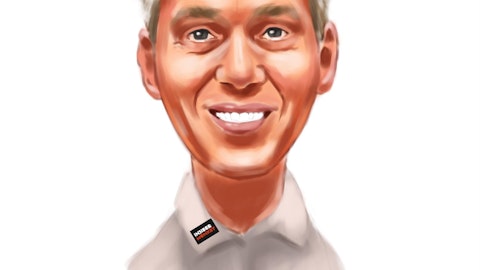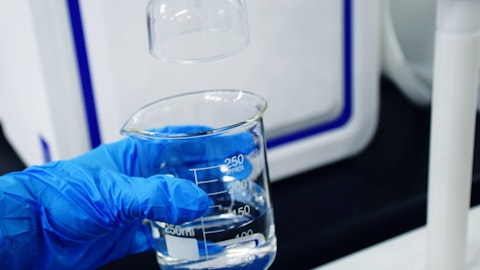Ed Arce: Hi John and Melanie. Thanks for taking my question. And sorry I missed past weekend in Philadelphia. Three questions for me. Firstly, on the launch. Just wanted to ask, prior to the TDAPA, which you expect in October of next year, what kind of activities will you be focused on those first six months as you prepare for meaningful sales ramp? And then once you do get the TDAPA, could you just review again the sort of perspective from the dialysis centers on the financial incentives that would be in place once TDAPA is designated. Secondly, I wanted to ask about pricing, especially relative to GSK and what your thoughts there, if you can share anything? And then lastly, I just wanted to ask again about the addressable market. I think you said in your prepared remarks, it was 550,000 or 575,000, and there’s a small percentage that do not take any medications for anemia. So, I just wanted to tie that down a little better. Thanks again.
John Butler: Sure, Ed. Thank you for the question. Sorry, I missed you last week, and I hope you enjoyed the meeting as much as I did. So just the last one first. So, there’s about 550,000 dialysis patients. And about 90%, 88% are on an ESA today. So there’s always that small percentage of patients who aren’t — don’t need to be treated very late stage or early and their hemoglobins are still some start dialysis with a little bit of residual kidney function, so they don’t necessarily need to start an ESA right away. So — but that’s still about 0.5 million patients that are eligible. We used to be able to say that the market was growing by 2% to 5% a year religiously for the last 30 years that I’ve been in, it, but of course, COVID has changed that, really throwing on its head.
You’ve seen that with the phosphate binder market that it hasn’t quite started to recover, it’s starting to, but not quite there. So, your question is about launch. So, prior to TDAPA, it’s actually — I mean it’s frustrating, obviously, to have to wait six months for CMS to provide that that TDAPA designation, and you’ll see that come in, I think it’s around July. If everything goes on the timeline, we would get the HIF-PHIs code, and so you’d be marching down that. But the dialysis providers really need that time also to prepare for introducing a new product into their protocols, et cetera. So there is — there’ll be things going on in a number of different ways. Obviously, they’ll be contracting that’s happening with the dialysis providers They’ll be — our commercial organization will be able to talk about the product.
It will be an approved product. We’re going to approved label. Physicians will want to learn about the product. So, having those conversations before it’s available and explaining to them the timing will be critical as well. And maybe the most important work will be done by our medical organization and Vifor CSL medical organization, where you’ll be working with the dialysis providers on those protocols for how the product will be used in the dialysis center. So, we won’t see — and again, some dialysis providers may choose to do small experience trials to develop those protocols, and so you may see some revenue. But I really want to kind of minimize the idea that there’ll be significant revenue. This is — it’s really an important six months to be ready to hit the ground and take advantage of that two-year TDAPA period.




